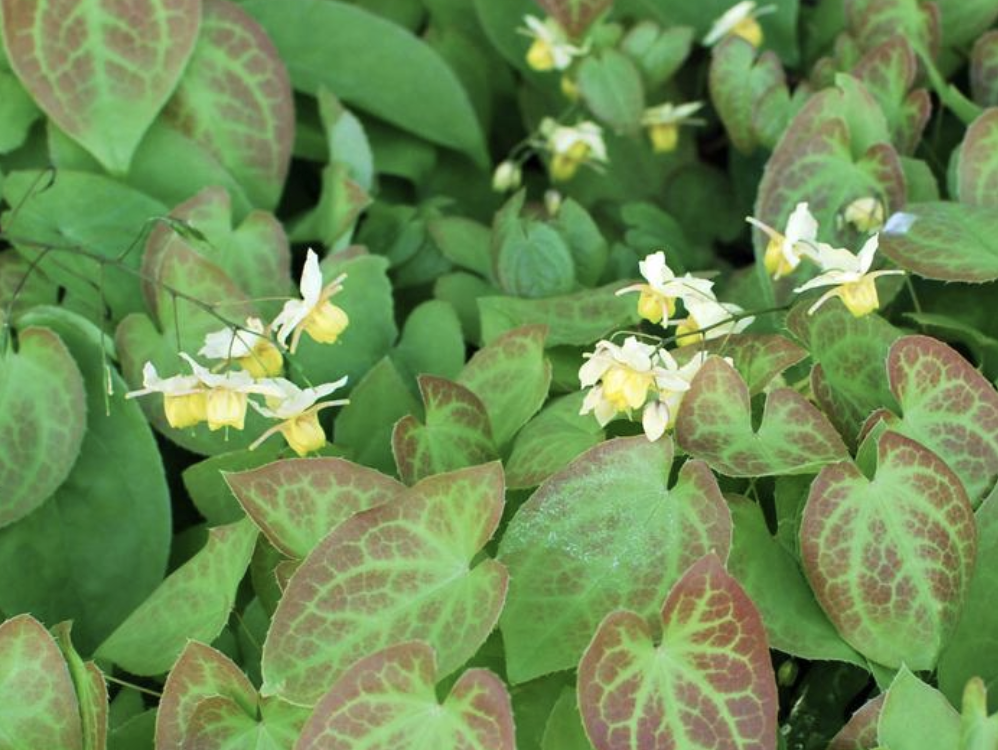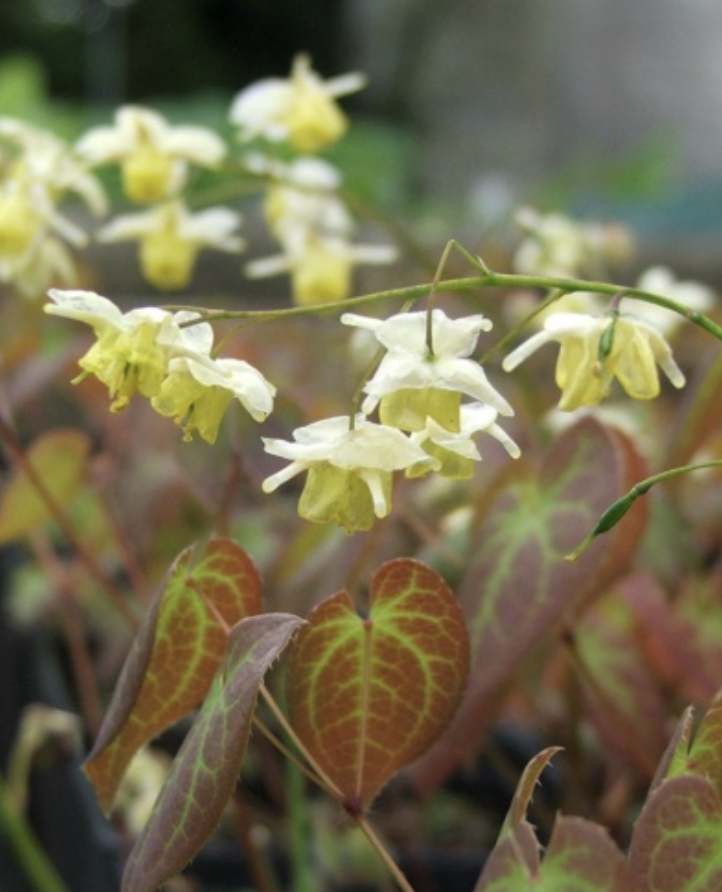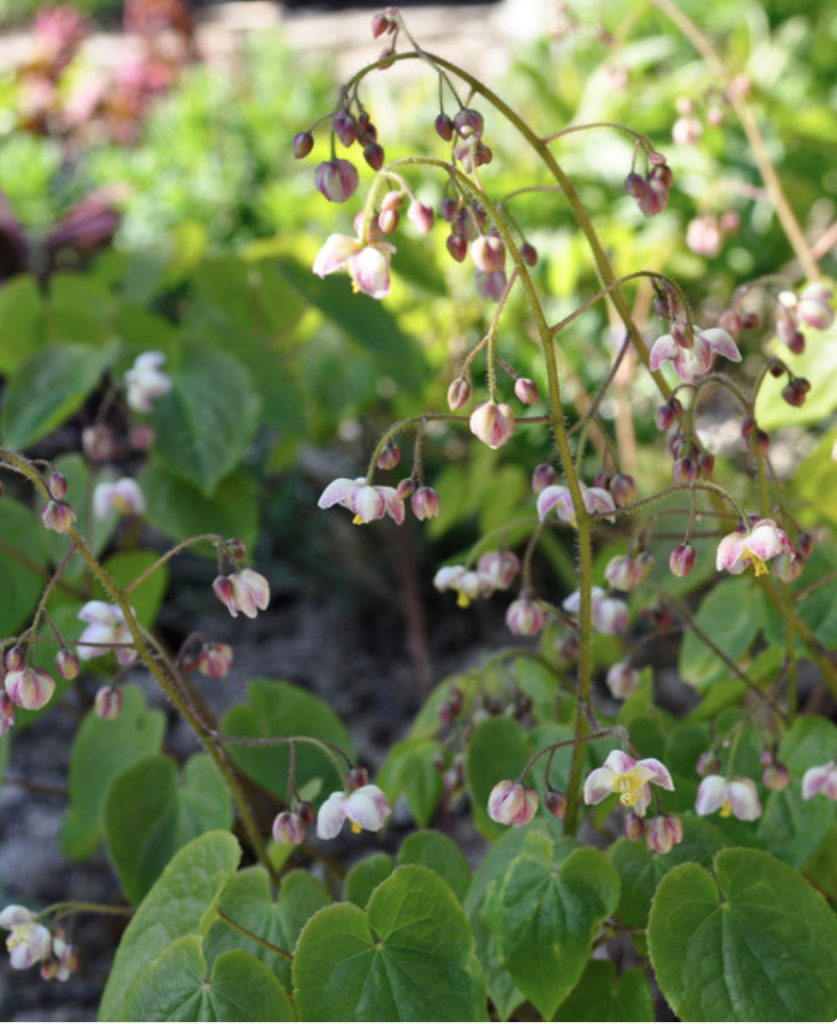epimedium

It is Epimedium time again and they never disappoint me. I came to know them fairly late into my gardening life. It was two years ago in a freezing January just after the Christmas mayhem and I had just recovered from a dreadful cough. I started to clear the remains of a large border. It is a difficult dry, shady border with a mature hornbeam that sucks up all the moisture all year round. As I worked through mounds of dropped leaves and dead foliage looking for what was left, I saw these dainty heart-shaped leaves reveal themselves, leaves of vivid green, copper-toned with veining. Persevering despite the weather and dry shade growing conditions, they are a true survivor in the garden and a delight for any shady areas.
Valuable for their foliage and flowers, epimediums are rhizomatous perennials that are very useful groundcover in dappled or deep shade. They are low-growing, semi-evergreen or evergreen plants with heart-shaped leaves that may be tinged or veined with red or bronze hues. In spring their small, dainty, spider-like flowers hover around slender stems held above the foliage. The flowers come in many different colours, white, pink, soft yellow and orange. There are around 30 different species, many occurring wild in China, with an ever-increasing range of excellent European hybrids being developed.
The European epimediums are less demanding than their Chinese cousins. A fine example would be Epimedium versicolor ’Sulphureum’, which thrives in the most inhospitable places in my garden and are perfect for a cool, north facing position. The leaves combine delicate shades of bronze in early spring, ideal for posies. The delicate sulphur-yellow flowers are borne on wiry stems, half buried among the leaves for protection. In autumn the green summer foliage again becomes marbled with bronze, remaining all winter.
Another reliable one to grow is Epimedium cantabrigiense. It is a hybrid cross of garden origin between E. alpinum and E. pubigerum. It was discovered in 1950 growing in a garden at St. John’s College in Cambridge, England. I love its small, soft pink apricot flowers rising from a clump of bright green, heart-shaped leaves. It stays evergreen for me too even in one year when the ground was covered with snow for weeks.
Nowadays, when I need something refined and reliable I will always include Epimediums in my design. They work well in a groups of 3 or 5 in mass plantings with an underlying rhythm, acting as a foil for other bolder woodland plants such as wood anemones, ferns and polygonatums etc.
Top tip: grow epimedium in the dappled shade of deciduous shrubs or on the north-facing border to mimic their home on the forest floor then be patient. In two or three years, they will let you know when they are happy and put a smile on your face in the coldest winter.
Shan Liu Design
Garden designer, Plant lover, Thalassophile, Mum of two

